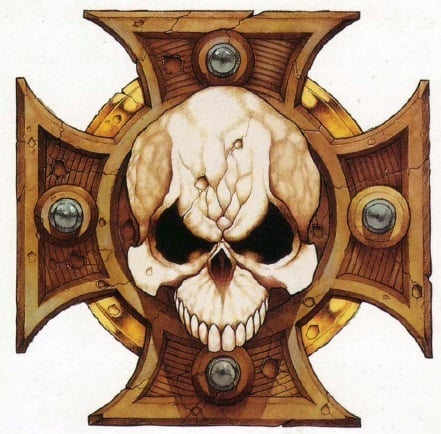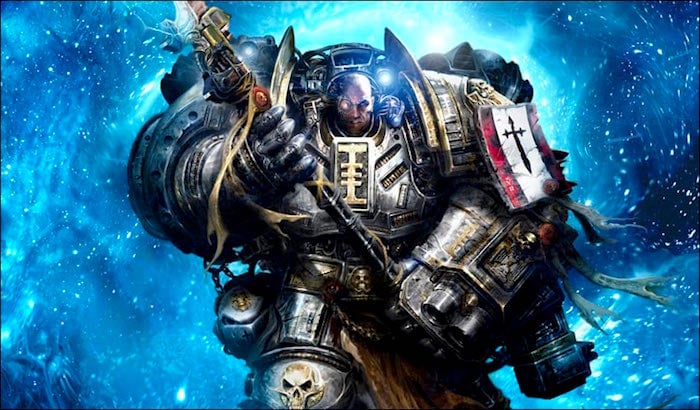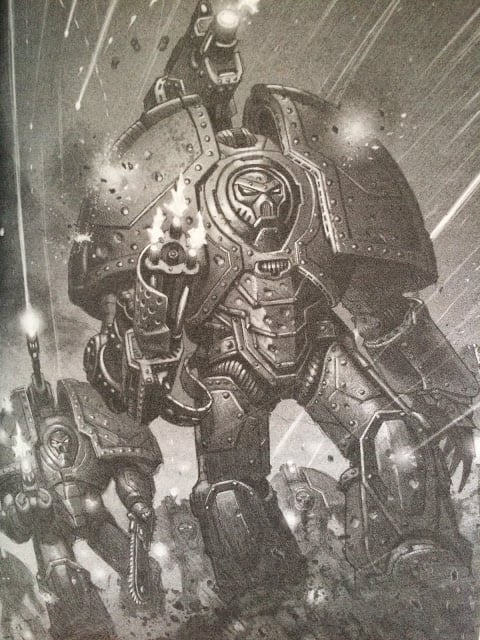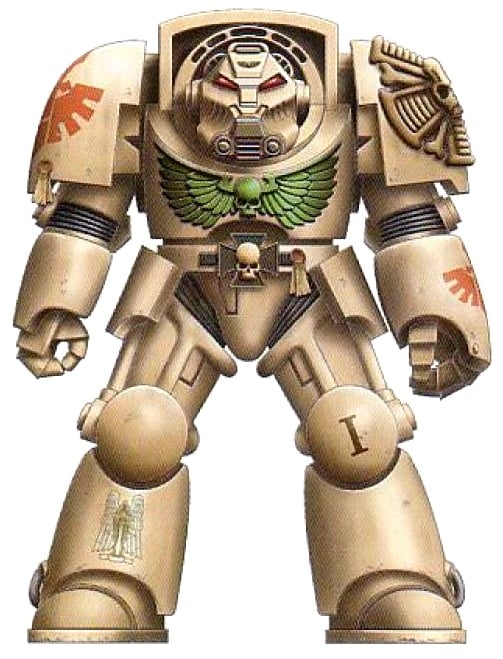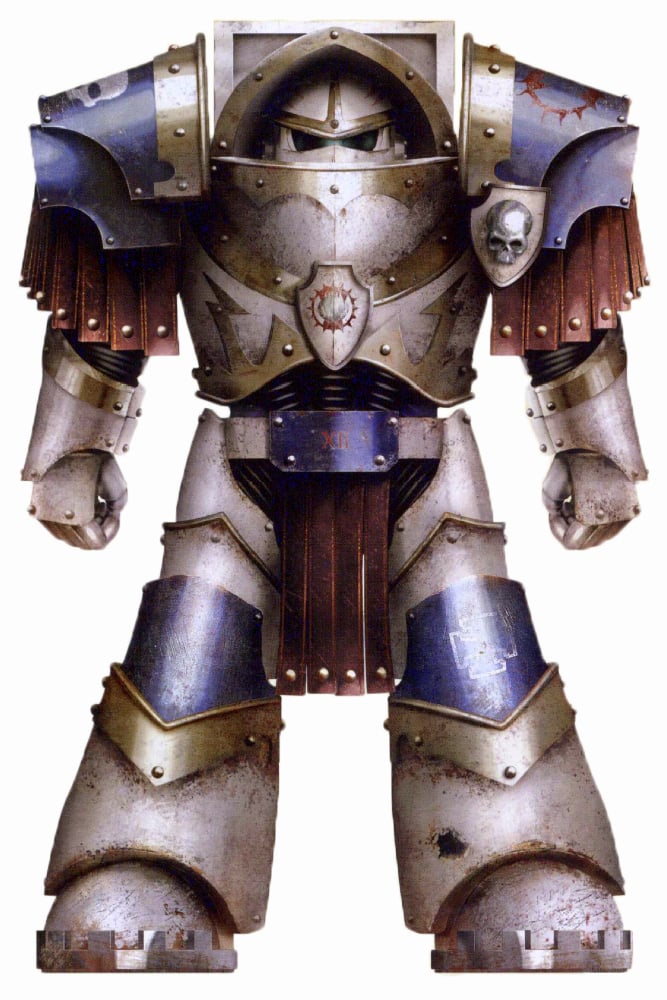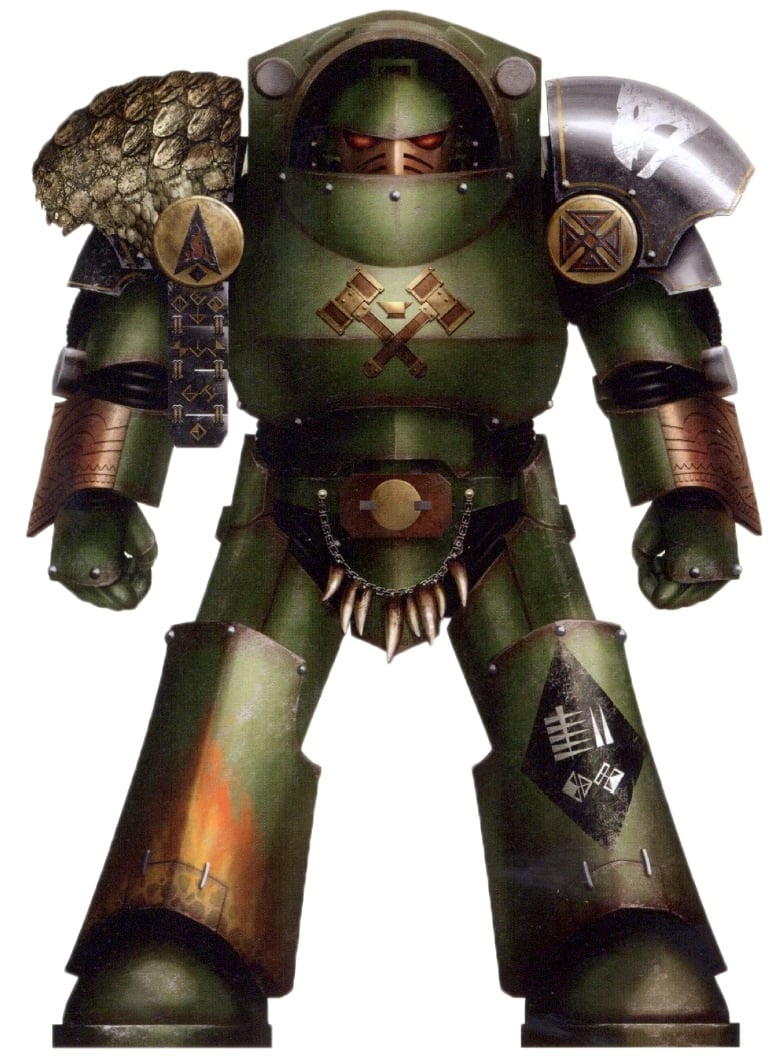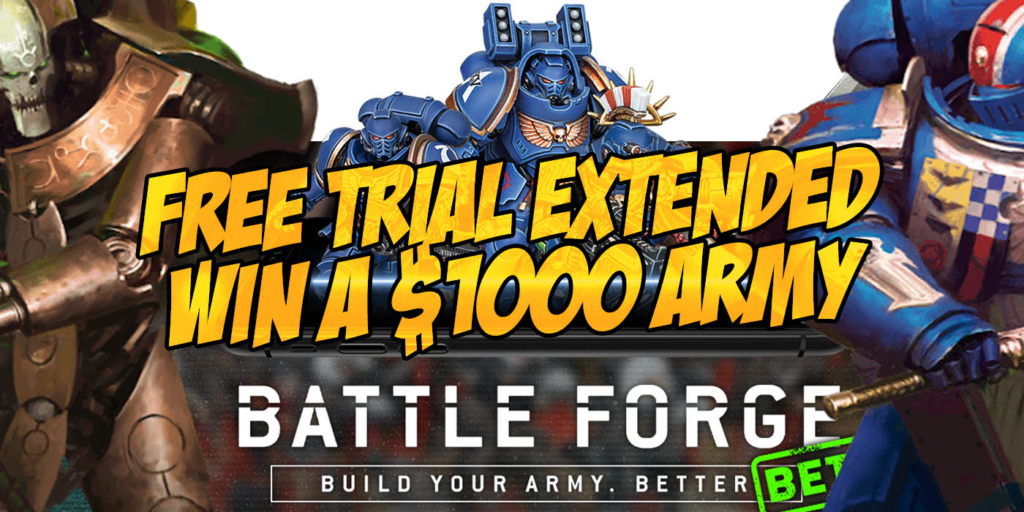Warhammer 40K: Terminator Armor Patterns
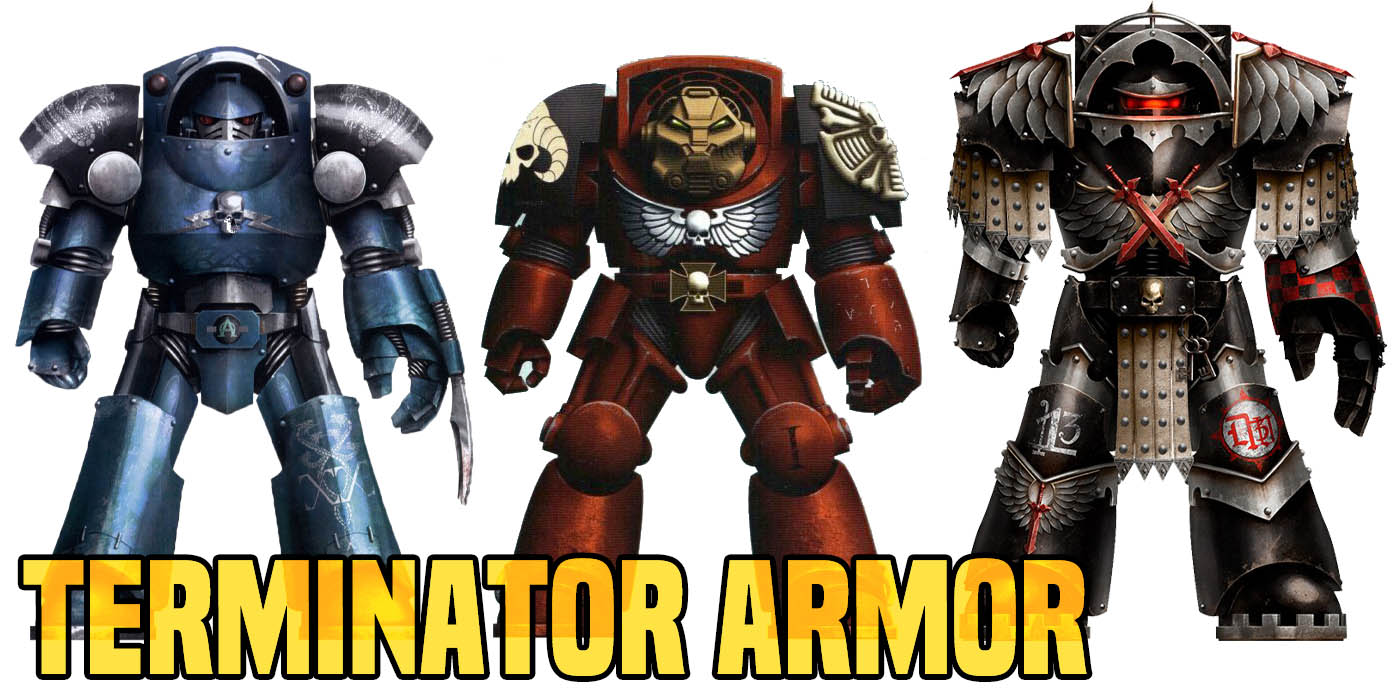

Loremasters, today we learn the sacred origins and patterns of Space Marine Tactical Dreadnought Armor – the Terminators.
Terminator Armour or Tactical Dreadnought Armour is the toughest and most powerful form of personal armour humanity has ever developed, used in Terminator units. The scarcity and expense to maintain Terminator suits means they are available only to the elite troops from the veteran companies of the Space Marine Chapters.
Armor Design
Like power armour, Terminator suits have an outer shell of ceramite-bonded plates powered by electrically-motivated fibre bundles. Plates of heavy plasteel further armour the ceramite sections, especially on the front of the suit. This extra armouring provides a level of protection that is far superior to normal Marine armor; not even a Krak missile will penetrate the suit’s breastplate. It also contributes to the immense weight of the suit, making the wearer less maneuverable and slower. External adamantium ribs help support this weight, while the inclusion of suspensors help the suit carry heavier support weapons.
On the left shoulder of every Terminator suit is displayed the Crux Terminatus badge – those worn by Terminator captains are said to contain a piece of the Terminator Armour the Emperor wore when he fought Horus during the final battle of the Horus Heresy
Like normal power armor, Terminator armour is fully enclosed with life-support functions, and includes an array of sensors including radiation monitors, biological detectors and self-diagnostic scanners. Terminator Armour also incorporates many more auxiliary systems than normal Marine power armour, including motion sensors and threat detectors. The armour’s sensorium, based upon tendril sensors, links directly into the wearer’s own awareness. The sensorium allows the wearer to use a vast number of scanners and detectors without conscious thought. Sensoriums can also be linked together, allowing every squad member to see exactly the same view of the battle as his comrades, though often only the Sergeant‘s suit will broadcast pict-signals.
Terminator armour is also notable for incorporating a Teleport homer in each suit. This technology allows the squad to overcome their suits’ lack of maneuverability by placing them directly in the enemy’s midst, though the process is dangerous and sometimes inaccurate. In other cases, Terminator squads will be transported into battle by Drop Pods or Land Raiders.
Armament
Due to the massive strength its fibre bundles and advanced servo-motors afford the wearer, weapons normally too heavy to be considered man-portable can be used without impeding performance. Heavy flamers and assault cannons can be wielded as easily as a normal man would a handle a lasgun or boltgun.
Terminator Armour has its own integrated weaponry: a storm bolter and a power fist. The Storm Bolter is a multi-chambered, short-barrelled development of the trusty standard bolter already used by the Astartes. It shoots at a faster rate than the original weapon, allowing it to lay down a curtain of fire. It is also quite short, partly because it is built into the exo-armour, making it an ideal close combat weapon. Such a combination in a single weapon has proven useful, to say the least. The power fist is already standard issue in many Chapters, and needs little work to adapt it to exo-armour.
Heavier weapons include the heavy flamer, the assault cannon and the cyclone missile launcher. Normally one squad member will be designated as fire support and carry one of these weapons.
Some Terminator squads, designated specifically for close-quarter combat, while eschew any ranged weapons in favor of either Lightning Claws or a combination of Thunder Hammer and Storm Shield.
Tactical Use
Most Marine chapters maintain some Terminator suits in their armouries, and train some squads in their use. However, Terminator armour is not used by these Marines as a matter of course, but issued as and when required. Conventionally armoured Marines, for example, would not be expected to clear the densely-packed corridors of a hive world. Their task would be to form a cordon while Terminator-armoured squads carried out the clearance.
By the 41st millennium, Terminator armour is so prized that its use is reserved for when it will be at its most effective. Terminators may be used in boarding actions, where the cramped conditions and long corridors mean that the Terminator’s strength and firepower can be brought to bear without the risk of flanking manoeuvres. Terminator armour may also be deployed on the open battlefield, either to wield devastating long-range fire with their heavy weapons, or deep-strike teleporting to attack the enemy’s command structure.
Early and extremely rare Mk.1 Saturnine Terminator Armor
Development
Terminator armour was developed during the Great Crusade by the Adeptus Mechanicus Tech Adepts of Mars. Its design is a blend of Dreadnought armour, standard Marine power armour and heavy suits used by engineers working in the most hostile environments (such as micro-debris-plagued orbits or the radioactive engine cores of stellar frigates). It was first intended to provide heavy armour and firepower to troops fighting in cramped battle zones, such as the claustrophobic tunnels of hive worlds and Space Hulks, which are too confined for Dreadnoughts and vehicles.
Several designs of Terminator armour evolved in parallel from the forge worlds of the Adeptus Mechanicus and the armouries of the Marines. Often bearing little physical resemblance to each other, these different exo-armour suits in fact have much in common. Massively armoured, sealed against any external conditions and incorporating their own armament, Terminator armour designs proved their worth from the first. Like power armour, the suits were equipped with fibre-bundle muscles and imposed few movement restrictions upon the wearer, despite their immense weight.
Terminator armor was originally meant to replace normal power armor, however the destruction wrought by the Horus Heresy destroyed many of these suits, and the limited resources left after the war ended combined with the complexity of building and maintaining Terminator suits contributed to their increase rarity.
Today Terminator suits are highly prized by their Chapters and kept in a constant state of repair and renewal. Although the Adeptus Mechanicus still maintains limited production of Terminator suits, the rate is so slow that often a “new” suit is cobbled together from refurbished parts salvaged from the battlefield. This explains the sometimes disparate and ragged look of Terminator squads. Indeed, as time marches onward the knowledge of how to fabricate some of the more complex pieces becomes an increasingly faded memory in the decrepit minds of the Adeptus Mechanicus, and “reverse engineering” is an all-too-common science in the 41st millennium.
Common Patterns
The Indomitus Pattern Terminator Armor is noted for being the most widespread pattern as of M41, due to its template being held by key Forge Worlds such as Mars.
Cataphractii Pattern was among the first issued to the Space Marine Legions, and was used during the late Great Crusade and Horus Heresy by both the Space Marines and the Legio Custodes. Although it was rare before the Horus Heresy, some Legions, such as the Iron Hands, possessed a large number of suits. In addition to being distinguished by its large, layered pauldrons, and the pteruges protecting the elbow and thigh joints, it was functionally distinct from other patterns, bearing additional plating and shield generators. This resulted in severe straining of the suit’s exoskeleton and reduced the wearer’s movement speed, leading to its decline among some Space Marine Legions during the early battles of the Heresy
Tartaros Pattern is possibly considered the most advanced form of Tactical Dreadnought Armour. It shared many systems with the Mk IV Maximus-pattern power armour whilst providing greater mobility for the wearer compared to the Indomitus with no loss in durability.
Learn of Rarer Terminator Patterns and Much More
Lexicanum
~What pattern do you prefer for your 1st Company, Commanders?

